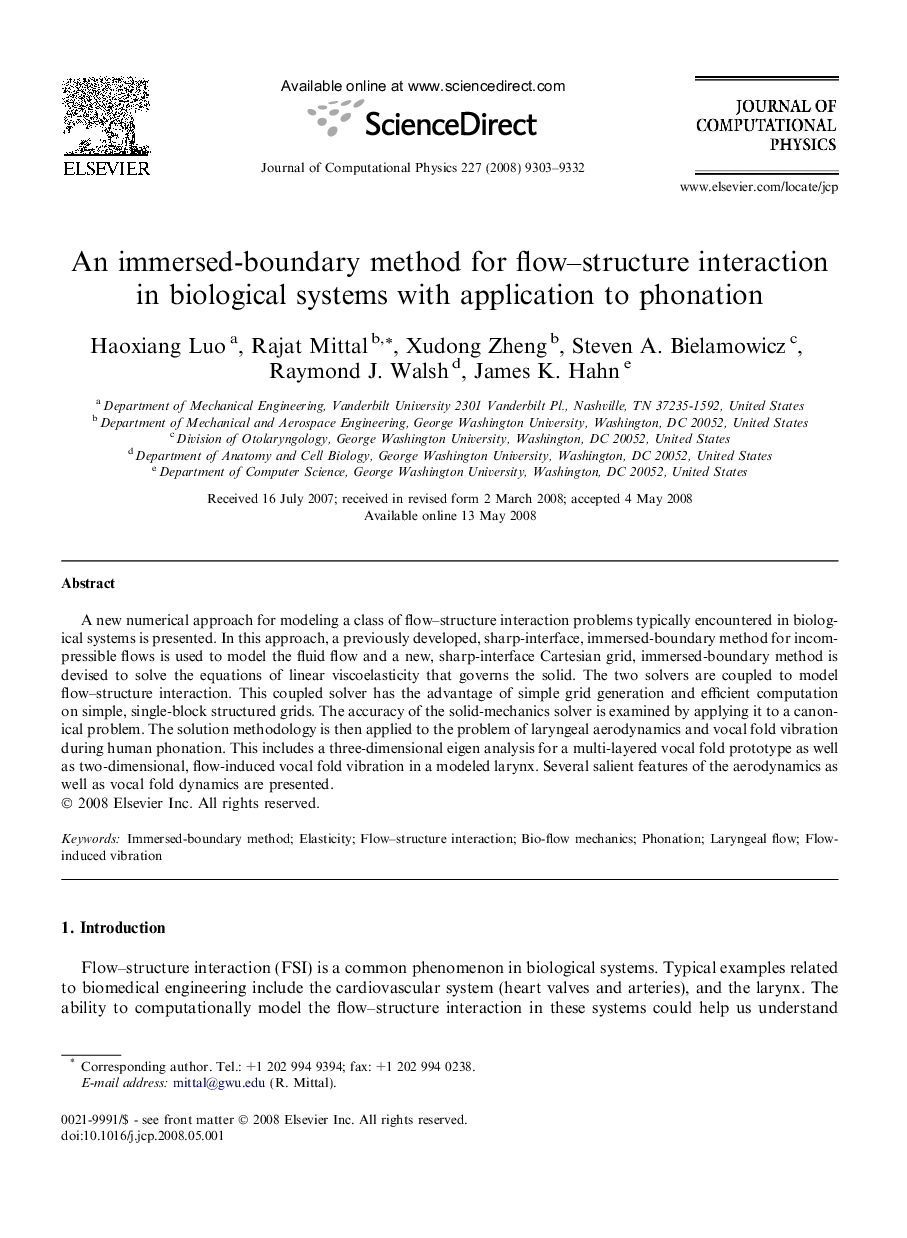| Article ID | Journal | Published Year | Pages | File Type |
|---|---|---|---|---|
| 522783 | Journal of Computational Physics | 2008 | 30 Pages |
A new numerical approach for modeling a class of flow–structure interaction problems typically encountered in biological systems is presented. In this approach, a previously developed, sharp-interface, immersed-boundary method for incompressible flows is used to model the fluid flow and a new, sharp-interface Cartesian grid, immersed-boundary method is devised to solve the equations of linear viscoelasticity that governs the solid. The two solvers are coupled to model flow–structure interaction. This coupled solver has the advantage of simple grid generation and efficient computation on simple, single-block structured grids. The accuracy of the solid-mechanics solver is examined by applying it to a canonical problem. The solution methodology is then applied to the problem of laryngeal aerodynamics and vocal fold vibration during human phonation. This includes a three-dimensional eigen analysis for a multi-layered vocal fold prototype as well as two-dimensional, flow-induced vocal fold vibration in a modeled larynx. Several salient features of the aerodynamics as well as vocal fold dynamics are presented.
